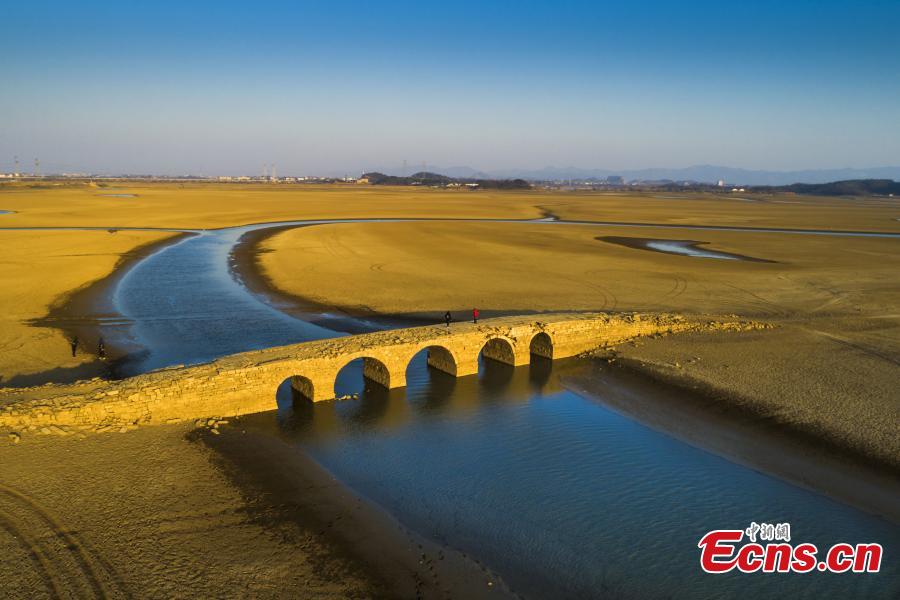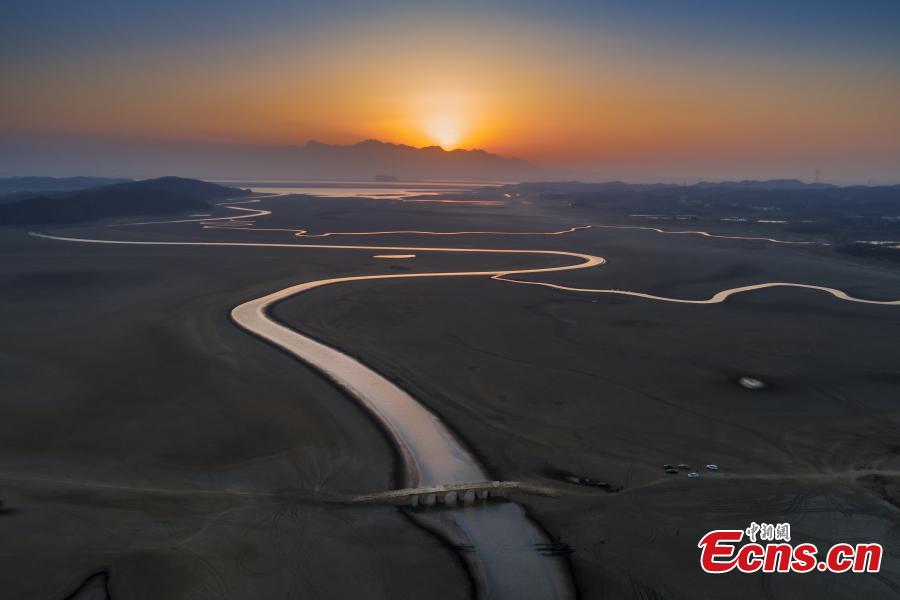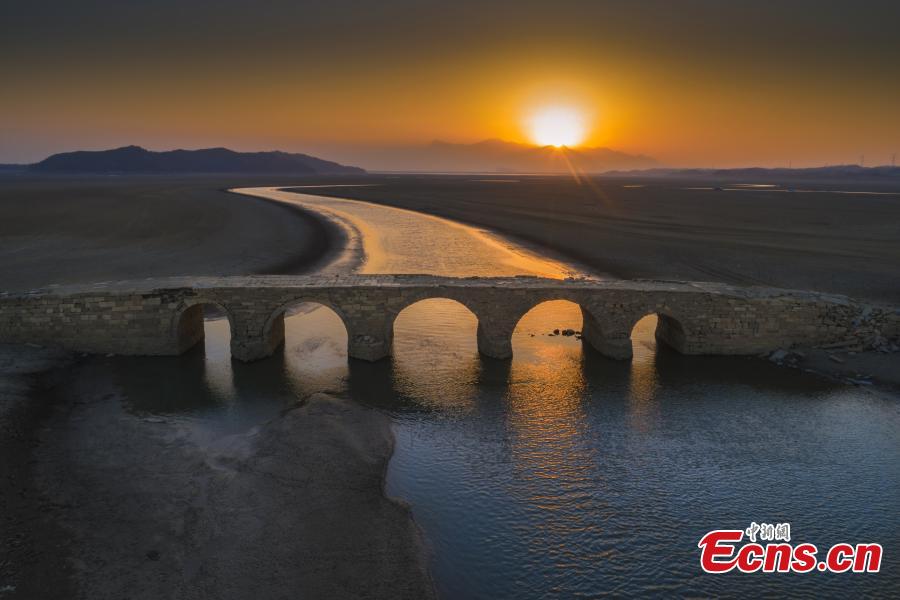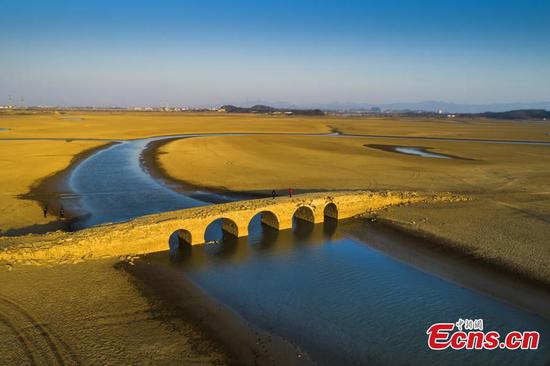
An ancient stone bridge with 5 arches stands over the lakebed of Poyang Lake in Jiujiang City, southeast China’s Jiangxi Province, Jan. 12, 2021. (Photo/Zhu Xingyong)
Poyang Lake, China's largest freshwater lake, has entered a dry season since the beginning of winter. Built in the Ming Dynasty (1368-1644), the stone arch bridge is submerged in the water during the wet season and emerges out during the dry season.

An ancient stone bridge with 5 arches stands over the lakebed of Poyang Lake in Jiujiang City, southeast China’s Jiangxi Province, Jan. 12, 2021. (Photo/Zhu Xingyong)
Poyang Lake, China's largest freshwater lake, has entered a dry season since the beginning of winter. Built in the Ming Dynasty (1368-1644), the stone arch bridge is submerged in the water during the wet season and emerges out during the dry season.

An ancient stone bridge with 5 arches stands over the lakebed of Poyang Lake in Jiujiang City, southeast China’s Jiangxi Province, Jan. 12, 2021. (Photo/Zhu Xingyong)
Poyang Lake, China's largest freshwater lake, has entered a dry season since the beginning of winter. Built in the Ming Dynasty (1368-1644), the stone arch bridge is submerged in the water during the wet season and emerges out during the dry season.

An ancient stone bridge with 5 arches stands over the lakebed of Poyang Lake in Jiujiang City, southeast China’s Jiangxi Province, Jan. 12, 2021. (Photo/Zhu Xingyong)
Poyang Lake, China's largest freshwater lake, has entered a dry season since the beginning of winter. Built in the Ming Dynasty (1368-1644), the stone arch bridge is submerged in the water during the wet season and emerges out during the dry season.























